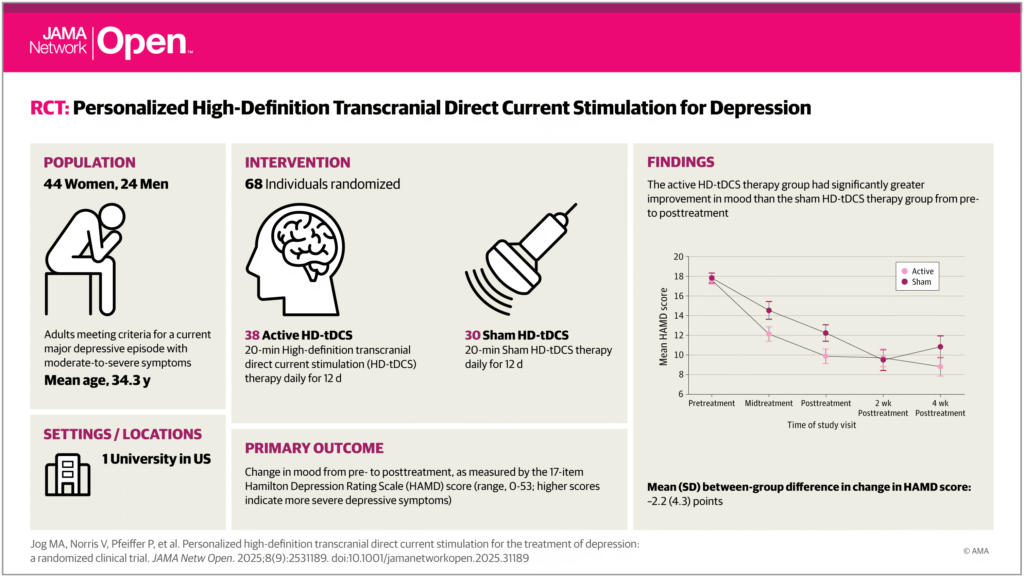A new study from UCLA Health suggests that a more targeted form of brain stimulation may offer faster and more effective relief for people with moderate to major depression. The treatment, known as high-definition transcranial direct current stimulation (HD-tDCS), uses small electrodes and neuroimaging to deliver precise electrical currents to specific brain regions involved in mood regulation.
Unlike traditional tDCS, which applies broader stimulation across the scalp, HD-tDCS focuses on individual brain networks linked to emotional processing and self-reflection. This personalized approach aims to improve outcomes by tailoring the stimulation to each patient’s unique brain activity.
In the study, 71 participants were divided into two groups. One group received HD-tDCS therapy for 12 consecutive weekdays, while the other received a sham treatment. Researchers measured mood changes before, during, and after the sessions.
Results showed that participants receiving HD-tDCS experienced significant mood improvements compared to the control group. These effects appeared quickly, with noticeable changes after just six days of treatment. Improvements were sustained during follow-up assessments at two and four weeks, suggesting lasting benefits.
Compared to conventional tDCS, psychotherapy, and medication, HD-tDCS produced faster and more consistent results. The treatment was also well tolerated, with only mild or no side effects reported. Because the technology is noninvasive and potentially suitable for at-home use, it may offer a convenient alternative for individuals seeking options beyond medication or talk therapy.
Article from UCLA: Personalized brain stimulation shows benefit for depression
Abstract in JAMA Network Open: Personalized High-Definition Transcranial Direct Current Stimulation for the Treatment of Depression

